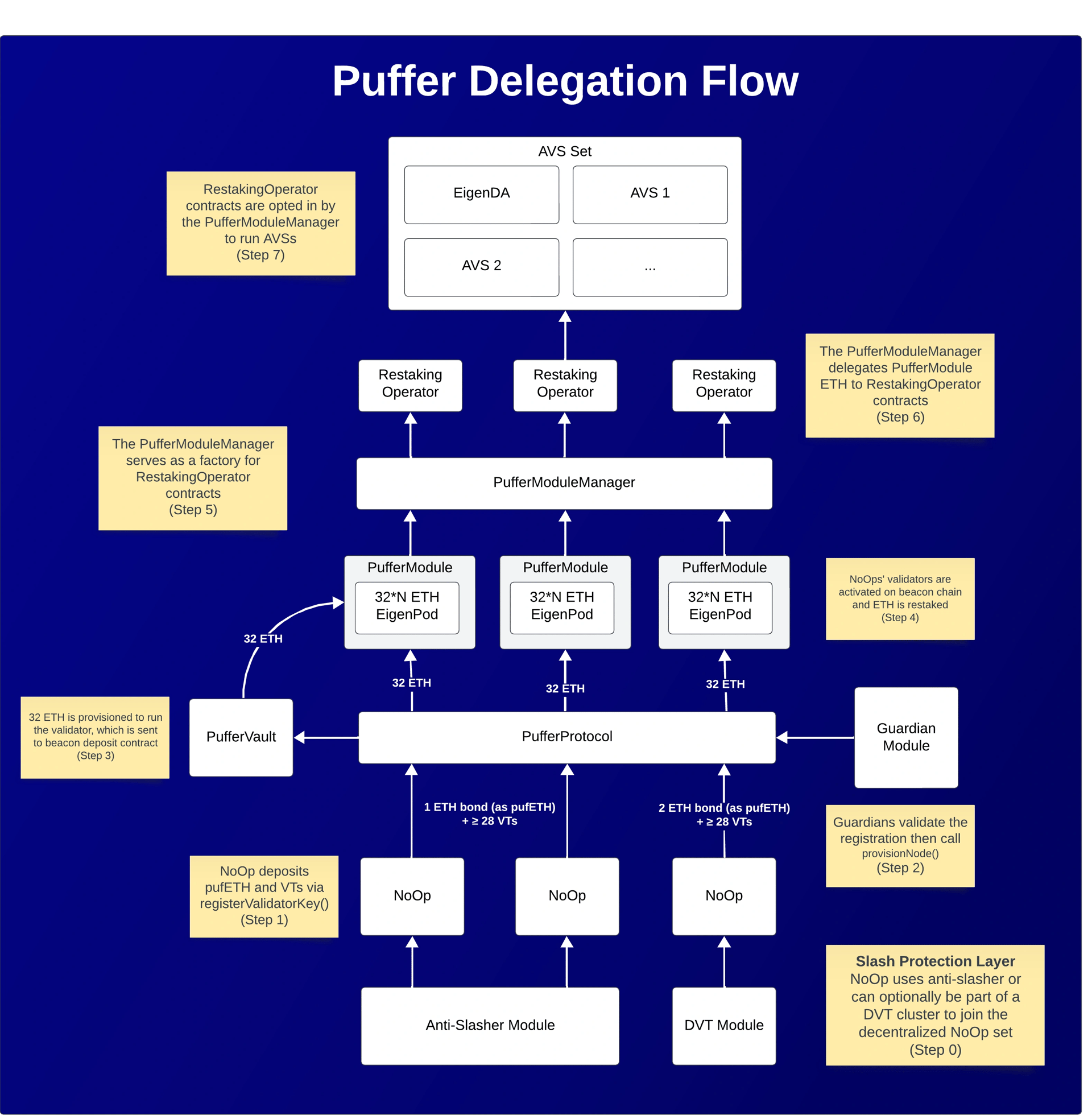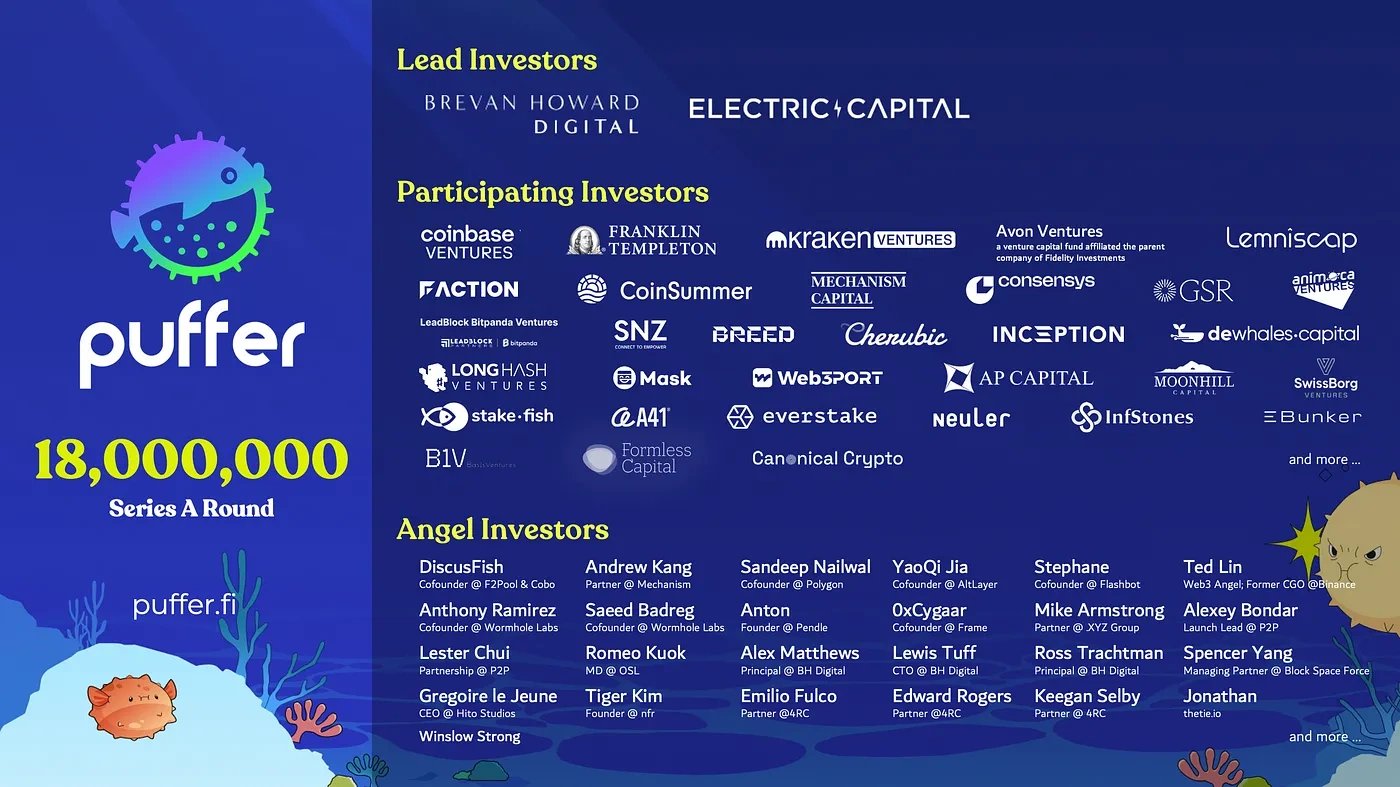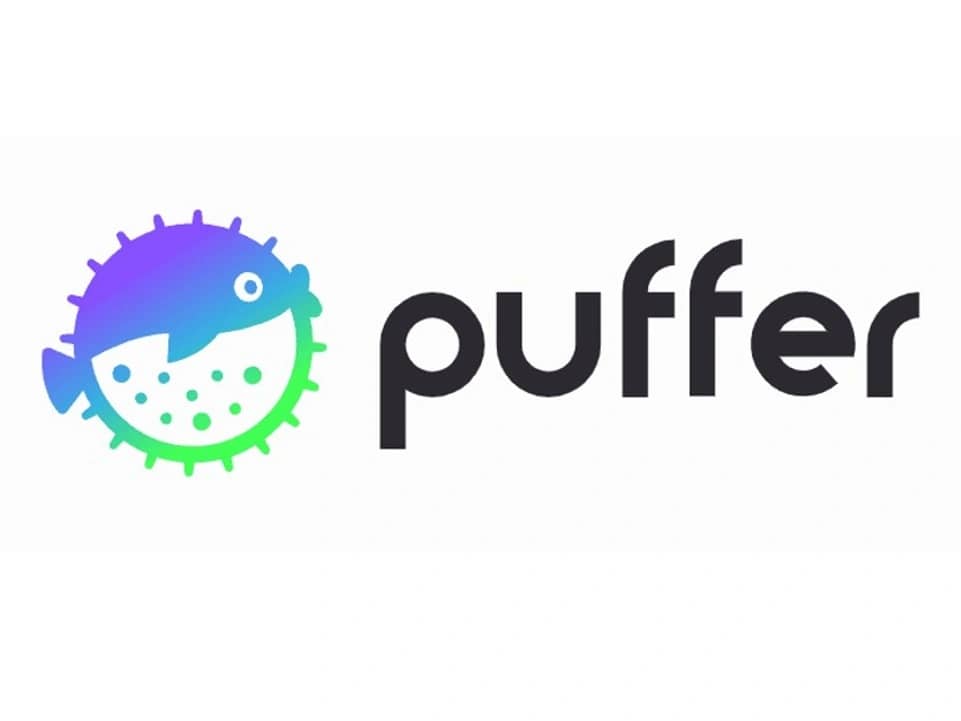Puffer
Puffer is a decentralized native liquid restaking protocol (nLRP) developed on Eigenlayer. It aims to simplify native restaking on Eigenlayer, enabling users to operate Ethereum Proof of Stake (PoS) validators and potentially increase their rewards.[1]
Overview
Puffer, founded in November 2022 by Amir Forouzani, aims to enhance secure validator operations while preserving decentralization. Its Anti-Slashing technologies and Secure-Signer tool are designed to reduce slashing risks, and the Secure-Aggregator supports an efficient liquid staking protocol.
Developed on Eigenlayer, Puffer's decentralized native liquid restaking protocol (nLRP) seeks to simplify native restaking. It allows users to run Ethereum Proof of Stake (PoS) validators with less than 2 ETH, intending to increase rewards. The protocol supports permissionless Node Operator participation to help maintain Ethereum's decentralization.
Puffer's features include permissionless validator operation, anti-slashing hardware support, and immediate liquidity for rewards. Users can stake any amount of ETH and potentially benefit from increased rewards through Eigenlayer integration. The Mainnet was launched May 9th, 2024. [1][2][3][4][5][18]

Puffer Modules
Puffer Modules are integral to the Puffer protocol, managing EigenPods that act as native restakers. Each module consists of validators controlled by Node Operators (NoOps), whose ETH is restaked for Eigenlayer AVSs.
Restaking Operators (ReOps), chosen by a DAO, perform AVS duties in exchange for fees. The protocol assigns AVSs based on risk preferences, allowing NoOps with less than 2 ETH to participate and earn rewards.
Joining a module is permissionless for NoOps, who must lock 1 or 2 ETH as collateral and validator tickets. They retain all PoS rewards from their validator and receive additional restaking rewards.
Puffer aims to address the risks associated with restaking by relying on governance to select qualified ReOps and vet AVSs, promoting a cautious approach as the ecosystem develops.[7]

Validator Tickets
Validator Tickets (VTs) are ERC20 tokens that allow holders to operate a staker-funded Ethereum validator for one day. They are created through ETH deposits, which compensate pufETH holders. Operators are required to lock VTs and 1 ETH of pufETH as collateral. The pricing of VTs is based on expected daily earnings.
To register, operators must deposit at least 28 VTs and 1 ETH in pufETH. Each VT corresponds to one validator-day, promoting active participation. While VTs seek to enhance capital efficiency, they also introduce new trust requirements and increase initial capital needs, with Puffer maintaining a relatively low bond threshold.[8]

Rewards
The Puffer protocol aims to generate rewards from validator tickets and restaking, which increase the ETH backing pufETH.
Stakers receive PoS and restaking rewards by holding pufETH. Node operators (NoOps) obtain all PoS rewards and additional earnings from holding pufETH. Restaking operators are compensated with fees for managing AVSs, while guardians receive fees for their services.
NoOps are entitled to 100% of consensus rewards, allocated to their EigenPod, and execution rewards that allow them to manage MEV strategies. Restaking rewards come from AVS fees, with some payments in ETH and others in ERC20 tokens.
Validator Tickets require ETH to mint, with fees distributed to guardians, the treasury, and stakers in the PufferVault.[9]
Guardians
The Puffer Protocol's Guardians are authorized nodes that ensure protocol stability, with a role designed to phase out as Ethereum evolves. They are a community-based decentralized autonomous organization (DAO) focused on the protocol's success.
Their main responsibilities include ejecting validators under certain conditions, vetting NoOp validator registrations, and returning bonds when validators exit. A majority consensus is required for significant actions.
Puffer seeks full decentralization through key EIPs, with Guardians serving as a temporary measure to support growth and protect staker assets.[10]
Burst Treshold
The Burst Threshold represents Puffer's commitment to capping its validator market share at 22% of Ethereum's total. Rather than stopping staking at this limit, Puffer aims to gradually reduce staker demand.
As the threshold is approached, the number of mintable validator tickets will decrease, allowing only existing validators to be supported. This strategy is intended to prevent exceeding the critical 33% consensus threshold, which could compromise Ethereum's stability. Puffer seeks to establish this threshold from the outset.[11]
Products
Secure-Signer
Secure-Signer is a remote signing tool that aims to prevent slashing offenses using Intel SGX technology, supported by an Ethereum Foundation grant.
It utilizes Trusted Execution Environments (TEEs) to protect validator keys and plans to expand to AMD's SEV. Secure-Signer can operate locally or on remote servers.
By encrypting validator keys and maintaining a secure database, it seeks to reduce slashing risks and enhance network resilience. Puffer also encourages diverse implementations to strengthen the validator ecosystem.[12][13]

RAVe
RAVe, or Remote Attestation Verification, is a component of Puffer's Ethereum Foundation grant that facilitates secure interactions between enclaves and blockchains, aiming to support permissionless functionality.
It allows nodes to verify that they are running a specific SGX enclave, ensuring application integrity. RAVe v1 utilizes EPID-based attestation through Intel's Attestation Service (IAS) to confirm enclave validity.
In the Puffer Protocol, RAVe is used to verify that nodes are operating Secure-Signer and registers validator public keys on-chain. Additionally, it aims to ensure correct program execution in enclaves, addressing concerns related to "stealth restaking" on Eigenlayer.[14]
Tokenomics
Puffer Token ($pufETH)
pufETH is a reward-bearing ERC20 token designed for compatibility with decentralized finance (DeFi), inspired by Compound's cToken. It offers a dual-source reward system that combines Ethereum Proof of Stake (PoS) rewards with earnings from restaking services, potentially outperforming traditional liquid staking tokens (LSTs).
The token uses validator tickets to enhance value growth by frontloading PoS rewards, encouraging participation. Unlike LSTs, pufETH decouples rewards from validator performance, ensuring stable returns.
pufETH integrates seamlessly within the LSDeFi ecosystem, allowing users to access restaking rewards directly by holding the token, thus maximizing the utility of their staked assets.[6]
Funding
Puffer has raised a total of $23.5 million through two funding rounds to support its development within the Ethereum ecosystem. The initial $5.5 million seed round, co-led by Lemniscap and Lightspeed Faction, aims to improve the viability of home stakers and promote decentralization through anti-slashing technology.
Subsequently, Puffer secured $18 million in a Series A round led by Brevan Howard Digital and Electric Capital to facilitate the launch of the Puffer Mainnet and reduce the entry threshold for validators.
These funding rounds involved various aligned investors and community funds, reflecting a commitment to the objectives of the Puffer protocol and the liquid staking market.[16][17]

Ambassador Program
The Puffer Pioneers Ambassador Program aims to engage community members in supporting Ethereum and the liquid staking token (LST) market.
Participants may receive rewards and financial incentives, along with the “Puffer Pioneer” role and an NFT. They also gain early access to updates and training opportunities.
The program seeks individuals who are passionate about cryptocurrency and knowledgeable in DeFi and LSTs. Roles include content creation, community building, or business development. Applications are open for two weeks through a designated form.[15]

